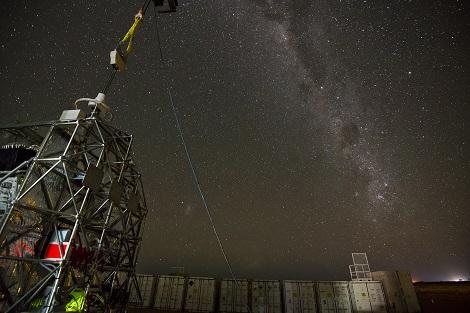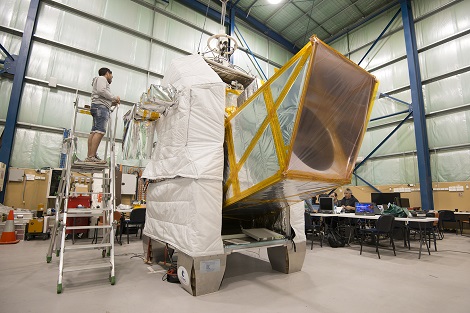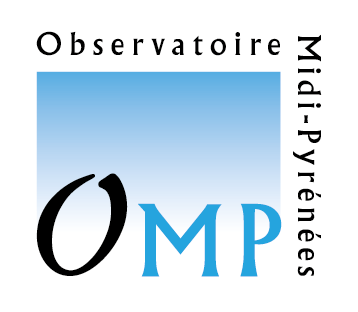Pilot experiment : the interstellar dust studied from a balloon
The Pilot astrophysics experiment will be launched in a few days under a stratospheric balloon from Alice Springs in central Australia. The aim is to observe the polarization of the emission of dust particles present in the interstellar medium of our Galaxy and of the nearby galaxies. With a mass of nearly one ton, Pilot uses the largest balloons launched by the CNES. It was developed by the Institut de recherche en astrophysique et planétologie (CNRS / CNES / Paul Sabatier University) and the Institut d’astrophysique spatiale (CNRS / Université Paris-Sud) and the Institut de recherche sur les lois fondamentales de l’univers (CEA-Irfu). Pilot has already flown a first time in September 2015 from Canada: it will therefore be its first flight under the sky of the southern hemisphere, richer in sources of interest for Pilot.

The emission of dust grains present in the interstellar medium of our Galaxy and nearby galaxies is weakly polarized because the dust grains are elongated and aligned with the magnetic field that bathes the interstellar medium. Pilot’s measurements will inform scientists about the nature of the dust grains and the processes that align them in this way. They will also help map the geometry of the magnetic field, which plays a fundamental role in the contraction of gas in the interstellar medium leading to the formation of new stars.
As this emission is also a nuisance for experiments that precisely measure the polarization of the cosmic microwave background, Pilot’s measurements will also allow a better understanding of this emission, and thus a better interpretation of the results obtained by these experiments.
The Pilot experiment will observe this emission in the far infrared. It is equipped with 2048 individual detectors, cooled to a temperature of 300 millikelvins, close to absolute zero. Polarization is measured using a rotating plate and a polarizer separating two orthogonal polarizations on the two focal planes of the experiment. With the exception of the primary mirror of the telescope, the whole optics is maintained at a cryogenic temperature (2°Kelvin or -271°C) inside a cryostat cooled with liquid helium, so as to limit the instrument’s own emission.
The experiment was designed and carried out by CNRS scientists and engineers at the Institut de recherche en astrophysique et planétologie (CNRS/CNES/Université Paul Sabatier) and IAS (CNRS/Université Paris-Sud) with major contributions from the balloon division of CNES (Toulouse), ESA, CEA (Saclay), which developed the focal plane and its readout electronics, and the universities of La Sapienza in Rome (Italy) and Cardiff (United Kingdom). The entire project is supported by CNRS laboratories and CNES funding.

Pilot will be launched in a few days by CNES as part of a campaign involving three different nacelle flights from Alice Springs, central Australia. Pilot’s mass will approach one ton and will have to reach an altitude of almost 40 km, which requires the use of an open stratospheric balloon about 100 m in diameter (the largest open balloon launched by CNES), and a flight chain as high as the Eiffel Tower.
The flight will take place during one of the two annual inversions of the stratospheric winds, a necessary condition to hope to make observations for more than 30 hours at the ceiling. Although Pilot was launched for the first time from Canada in September 2015, this flight from the southern hemisphere will this time allow us to observe exceptional astrophysical sources such as the Magellanic Clouds, satellite galaxies of ours, or the inner regions of the Milky Way, which are inaccessible from the northern hemisphere.
Further Resources
- Dedicated Website : http://pilot.irap.omp.eu/PAGE_PILOT/index.html
- The Launch made on April 17, 2017 : http://pilot.irap.omp.eu/PAGE_PILOT/SITE_OFFICIEL/ACCUEIL/Actualites.html
IRAP Contacts
- Jean-Philippe Bernard, jean-philippe.bernard@irap.omp.eu
- Ludovic Montier, ludovic.montier@irap.omp.eu






